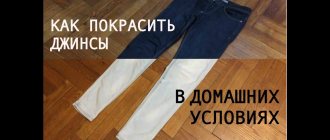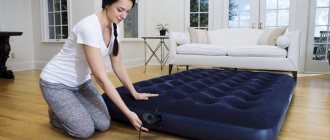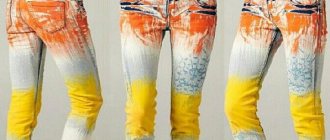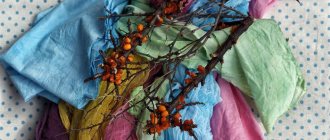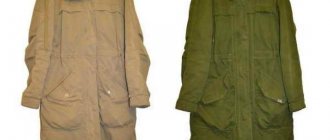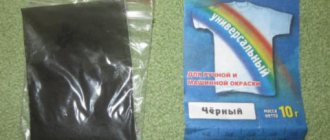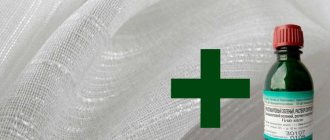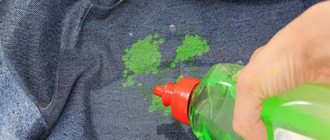Dyeing old or faded clothing is an endless source of creativity. In this connection, there may be a spiritual impulse to transform the thing and give it a second life. In a previously published article, we already wrote about store-bought dyes for clothes and how to use them. Here we’ll talk about using, so to speak, “homemade” dyes that can effectively restore color.
Advantages and disadvantages of natural dyes
Before deciding on the choice of homemade pigment for clothing, you need to take into account the fact that homemade products are suitable primarily for dyeing natural fabrics such as cotton and linen. As for synthetics, there are special ready-made dyes for them.
Natural dyes are only suitable for dyeing natural fabrics or those with a minimal content of synthetic fibers.
You can highlight your pros and cons when dyeing clothes at home using fruits, herbs, vegetables, spices, tea, coffee, etc.
The advantages include:
- Budgetary procedure. Many improvised dyes, such as beets, onion peels, etc., are much cheaper than ready-made synthetic dyes. True, for dyeing fabrics, in most cases, you need special mordants, which you still have to additionally search for and buy.
- Housewives note the color stability when using natural pigments.
- The relative safety of most homemade dyes. This applies to a greater extent to natural components. If you decide to dye your clothes, for example, with potassium permanganate, you need to act very carefully, because... it belongs to explosive substances.
Natural dyes are a safe and natural product for dyeing fabrics.
The main disadvantages of the procedure are:
- The complexity of the procedure. If you buy a ready-made composition, then the method of diluting it is usually extremely simple. In the case of using improvised means, for example, it is necessary to make a decoction, squeeze out juice, etc. This somewhat lengthens the procedure for dyeing fabrics. In addition, when using natural dyes such as berries, leaves and flowers of plants, fabric etching is necessary, which further lengthens the dyeing process.
- A certain unpredictability of the result. Homemade dyes cannot definitely guarantee the shade as “in the picture.” For example, the same fruit, depending on the time of year, may contain different amounts of pigments, which will affect the color saturation of clothing. Therefore, it is recommended to test the homemade mixture on a small area of fabric.
Dyeing clothes with improvised means does not always give a predictable result!
Folk remedies
Loose leaf tea or coffee will help you get a creamy, beige or brown color. Pour boiling water over one or two tablespoons of coffee or tea and brew for ten minutes. Then strain and pour into a container with water at a temperature of about 30 degrees. Mix the solution and put the tulle there. Soak the curtain and turn it regularly. When you get the color you want, rinse in clean, cool water.
To dye beetroot tulle, wash, peel and cut the vegetable. Pour vodka over the pieces. To obtain a rich shade, use a liter of vodka per kilogram of beets. To obtain a delicate color, 0.5 liters of vodka is enough. Boil the beets until tender and strain the solution.
Pour the strained mixture into a bowl of warm water and mix. We lay the curtains and soak them, turning them over during the process. When you get the desired shade, rinse the tulle. To dye with other folk dyes, make a decoction of the required concentration and also soak the tulle.
Dyeing fabrics with vegetable dyes
Once the choice has been made in favor of a specific dyeing component, you need to figure out how to dye the fabric with your own hands.
The process of coloring fabrics with plant pigments includes 2 stages: etching and, in fact, dyeing.
Fabric etching
Etching of fabrics is carried out in order to fix the paint on the fabric and enhance the brightness of the pigment. In some cases you can do without it. For example, if you need to add a slight tint to white things. If you need to radically repaint textiles, then you cannot do without preliminary preparation.
The question arises, where can we get the necessary chemicals for this process? Our searches led to pharmacies and specialty chemical stores.
You can get acquainted with the features, purpose and composition of various etchings in the table below.
Table of Chemicals for Fabric Etching
| Type of fabric fixative | Features of application | Recipe per 100 g of tissue |
| Potassium alum | It is used in the case of obtaining light shades: yellow, lemon, brown, bright red. When pickling, formic or oxalic acid is added (alum - 15%, acid - 5% of the weight of the yarn). | 2-3 liters of water and 4g of alum |
| Copper sulfate (copper sulfate) | Used to produce dark yellow, grey, greenish and brown shades | 2-3 liters of water and 1 g of copper sulfate |
| Glauber's salt (sodium sulfate) | Universal etching. Allows for uniform color | 2-3 liters of water and 1 g of salt |
| inkstone | It is used when it is necessary to obtain dark shades: gray, brownish-green, black, reddish-brown. | 2-3 liters of water and 0.5 g of iron sulfate |
Important! The choice of fixative affects the resulting color. Thus, the use of one type of natural pigment with different etchants gives different colors. The final result is also influenced by the concentration of the fixative, the decoction and the pickling method.
Types of etching:
- Pre-etching
The fixative powder is dissolved in a small amount of water and poured into main water heated to 40 degrees. Wet fabric or yarn is dipped into the solution and brought to a boil. Boil for 15-20 minutes, stirring. Then the fabric is removed and immediately dipped into a lukewarm decoction of the dye.
- Simultaneous with coloring
This is the easiest etching method. As in the first case, the fixative is dissolved in a small amount of water and poured into the decoction. Everything is thoroughly mixed and the clothes are put down.
- Post-etching
It is carried out after dyeing at the end of the procedure. Pour the etching concentrate into the decoction with the dyed fabric that has cooled to 35-40 degrees. Boil over low heat for 30 minutes. After cooling to 60 degrees, the items are removed and rinsed.
Etching fabric before painting
Etching with improvised means
You can try replacing the etching by boiling it in a solution using improvised means. The following options are possible:
- A good effect of uniform coloring and color fastness is obtained by preliminary boiling in alkaline water with soda. To do this, make a solution in the proportion of 2 grams of soda per liter of water and add a little soap or liquid powder. Boil the clothes in this liquid for 20 minutes. Then the things need to be rinsed and that’s it, they are ready for pigmentation.
- When dyeing clothes with berries, it is necessary to prepare a saline solution in the proportion: water/salt 20:1. Then put the cloth and simmer over low heat for about an hour.
- If you dye vegetables with fruits, for example, beet broth, then the clothes are first placed in a vinegar solution. To do this, add 1 part vinegar to 4 parts water. Place the cloth and cook over low heat for about an hour.
Dye the fabric black and brown
The process of dyeing fabric black and brown, as well as any other, is not much different.
The main thing is to choose a natural dye that is more suitable for you. To make it black use:
- maple leaves;
- sea buckthorn leaves;
- oregano stems;
- loosestrife.
For a more saturated black shade, you must first soak the fabric in a mordant based on iron sulfate for several hours.
Brown color allows you to get:
- oak bark;
- horse sorrel;
- walnuts (peel and shell of the fruit);
- leaves and young branches of black alder.
ATTENTION! CARRY OUT ALL PAINTING WORK ONLY WITH RUBBER GLOVES. NATURAL SUBSTANCES PERFECTLY COLOR NOT ONLY FABRICS, BUT ALSO THE SKIN OF HANDS.
Dyeing process
You can dye clothes in different ways: by boiling or soaking.
By the way, if you decide that it is easier to buy a ready-made pigment, we have prepared an article for you with a detailed description of how to dye fabric with a ready-made dye at home.
So, back to homegrown dyes.
Recommendations regarding the preparation of dishes, water, etc. coincide with those when using ready-made pigments.
As for the preparation of the coloring solution, there are some nuances here, we will analyze them below.
Coloring with fresh natural dyes.
Coloring with fresh berries, fruits, vegetables or herbs comes down to the following steps:
- Making juice or puree. When using fruits and some vegetables, such as carrots, it is better to prepare the juice using a juicer. If this is not possible, then grind in a blender until pureed. Also, it is more advisable to prepare puree instead of juice from berries and herbs.
- Making a quick decoction. Dilute juice or puree with water to the desired saturation, add salt at the rate of 1 tbsp. per 1 liter of solution. Boil for 5 minutes.
- Let cool slightly and strain through double cheesecloth.
- The fabric is soaked for 12-24 hours, dried and the shade is fixed with an iron or etchant, if this has not been done before.
From fresh berries, vegetables, fruits and herbs you need to make juice or puree in a blender for dyeing fabrics
Coloring with dried herbs and fruits
In the case when dry berries, herbs and flowers are used, the first thing you need to do is make a decoction with the addition of salt at the rate of 1 tbsp. per liter of liquid. To do this, they are boiled for 0.5 - 2 hours in water. Then everything is the same: we strain, soak or boil the clothes, dry them, iron them.
Regarding boil dyeing, we do not recommend preparing a decoction and immersing the fabric at the same time, unless this is done intentionally. In this case, multi-colored spots may appear due to the uneven distribution of pigment in the solution.
It is necessary to prepare a decoction from dried herbs and flowers for further pigmentation of clothes
Dyeing in the washing machine
Dyeing fabrics in a machine takes about half an hour (linen and cotton fabrics are suitable):
- First, prepare the paint, mix it;
- Pour the coloring pigment into the compartment of the washing machine intended for powder;
- Load things into the car, but before that, wet them well;
- Set the washing temperature to 80 degrees, not lower;
- Wash for about 30 minutes;
- Rinse items by hand in cool water.
Leather jacket
After painting, wash the machine. Otherwise, the next time you wash, there is a risk of staining unnecessary items.
How to dye fabric coffee
The question often arises: “is it possible to dye clothes with coffee and how to do it?” The answer is definitely positive; moreover, this is one of the easiest ways to pigment fabric at home.
Often, the coffee dyeing method is used for fabrics from which home craftswomen make Tilda dolls. Coloring with a weak coffee solution allows you to get a flesh color.
The process consists of the following steps:
- Preparation of the solution: for convenience and speed, it is better to give preference to instant coffee. The solution is prepared in the following proportions: for 2 liters of water you need to take 100 grams of coffee and 1 tbsp. salt. If you need to get a flesh color, then take 50 g of coffee per 2 liters. water. Coffee powder and salt are dissolved in boiling water and kept on the stove for a minute. Next, it is better to strain such a solution to remove excess undissolved grains and put it back on the stove.
- Boiling fabric. Once the coloring mixture boils again, you can put things down. For a light brown tone, it is enough to boil the clothes for 10-15 minutes. If you need a rich color, the cooking time is extended to 30 minutes.
- Drying: After the required time has passed, the clothes are taken out of the solution and carefully straightened on a hanger. You can wait until the water cools down to avoid scalding.
- Fixing the pigment: for this, it is recommended to iron the items immediately after drying. At the same time, the fabric should be slightly damp, i.e. Don't wait for it to dry completely.
Coffee gives fabrics from light flesh to dark ocher and brown tones
Preparatory stage
Before painting, thoroughly tap and shake out the product so that no dust, small specks or dirt remain. Otherwise, the coloring will turn out uneven. Then wash the fabric in warm water and a suitable detergent. For tulle, it is better to choose liquid gel or washing shampoo. In addition, you can prepare a soap solution from water and liquid soap or shavings of laundry or baby soap. How to make homemade laundry detergent, see here.
For natural fabric, choose a temperature of 40 degrees, for synthetics - 30. It is advisable to wash by hand; in the washing machine, set the gentle or gentle mode. During the washing process, do not squeeze or twist the fabric too much. After the procedures, rinse the curtains thoroughly and do not wring out the material, but hang it up to drain. Then the products will not have to be ironed.
Carefully straighten the tulle so that folds and creases do not form. Otherwise the coloring will be uneven. Leave until completely dry. Repeat the procedures if necessary. In order to dye the fabric efficiently, reliably and evenly, it is important that it is perfectly clean and even.
How to dye fabric with beets
Beetroot gives white fabric a beautiful pink-raspberry color, and beige fabric a richer peach tone.
The procedure for coloring beets comes down to the following steps:
- Preparation of the coloring solution. Peel 3-4 large raw beets, rinse well and cut into large cubes or slices. Immerse in water poured into a saucepan or other container that can be kept on fire and where the painting process itself will take place. There should be enough water for complete immersion and free distribution of clothing, without strong creases or compression. The more beets you cut, the richer the color you will get. Next, add salt to the water at the rate of 1 tbsp. for 2 l. water and boil everything over low heat for 2.5 - 3 hours. After which the beets are caught in a colander. It is also advisable to strain the resulting dye through cheesecloth.
- Dyeing. Once the solution is obtained, you can immerse the clothes. It is painted using the soaking method for 12-24 hours. The longer the clothing sits, the richer and more stable the color will be. During this time, the fabric must be turned over and the solution mixed several times to evenly distribute the pigment.
- Drying. The clothes are taken out, the water is gently squeezed out without twisting and straightened on a hanger. It is advisable to dry such fabric outside in the sun. This consolidates the result.
- Fastening with an iron. Completely dry clothes are ironed on a gentle cycle (wool, silk, nylon) without steam.
Dyeing clothes with beets
Is it possible to dye a Bolognese jacket?
Before painting the jacket, it must be soaked in hot water. This is necessary to ensure that the paint is evenly distributed throughout the product. You can soak it in the bathtub or in a basin. After this, take out the jacket and smooth out all the creases so that the paint adheres correctly. Heat water in a large saucepan; there should be enough water to completely cover the item.
Important! The jacket should float in the water so that the pigment is evenly absorbed. It is advisable to choose a very large pan. Over medium heat, boil water. Next, pour water into a large basin and put the jacket there.
Painting a nightgown
The water temperature should be approximately 70 degrees. Add paint to boiling water and stir quickly. One package of pigment requires at least 10 liters of liquid. For a less vibrant color, less water is needed. The paint is dissolved in a separate container. Pour 250 ml of boiling water over the powder packet and stir. Even liquid dyes are first diluted with water. To make the color more saturated, you can add a spoonful of vinegar to the water. Dye the jacket for about 2 hours.
How to dye clothes with brilliant green, iodine or potassium permanganate.
To the question: “Is it possible to dye clothes with brilliant green, iodine or potassium permanganate (potassium permanganate),” the answer is clearly affirmative.
Brilliant green will give white fabric the color corresponding to its name, potassium permanganate will give it a beautiful crimson color, and iodine will give it ocher or orange color.
Dyeing with these means is perfect for pigmentation of large volumes of fabric, for example, for curtains, a rug on a sofa. The solution does not need to be boiled when preparing and can be used in a bath. The method is very simple, and this makes it attractive.
- Preparation of the solution: take about 5 liters for 1 bottle of iodine, brilliant green or manganese solution (10 ml). water. In the case of iodine, to obtain a dark brown tone, use 2-3 bottles of 5 liters. warm water. If potassium permanganate is crystalline, it is dissolved in boiling water in the following proportion: 1 tsp. for 1 l. water. They don't boil.
- Immerse the fabric in the resulting solution and leave for 30–50 minutes. The longer the soaking time, the richer the color.
- Pigment fixation. To fix the color, the dyed fabric, after a light spin, is placed in vinegar water for 15 minutes. It is prepared as follows: 3 liters. add 50 ml of 9 percent vinegar to warm water.
- Drying and ironing. Dry as usual without spinning on a hanger. Iron at low iron temperatures.
The color saturation of the fabric depends on the exposure time in the solution
How to paint
We take the selected plant material, grind it and boil it in distilled or rain water. If possible, add potash. The solution must be evaporated until it acquires the required concentration and color. We filter the dye solution, and then boil the fabric in it (the procedure time depends on the desired shade). Fabric dyed with natural dyes should not be washed (or do it VERY carefully and with gentle detergents) if you do not want it to lose its color or acquire unintended stains.
